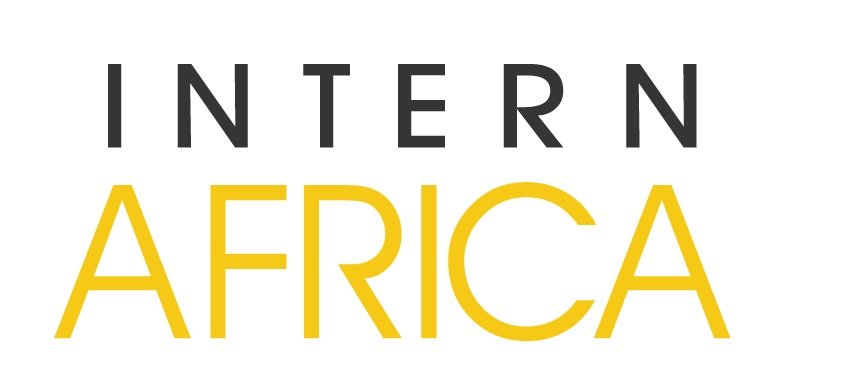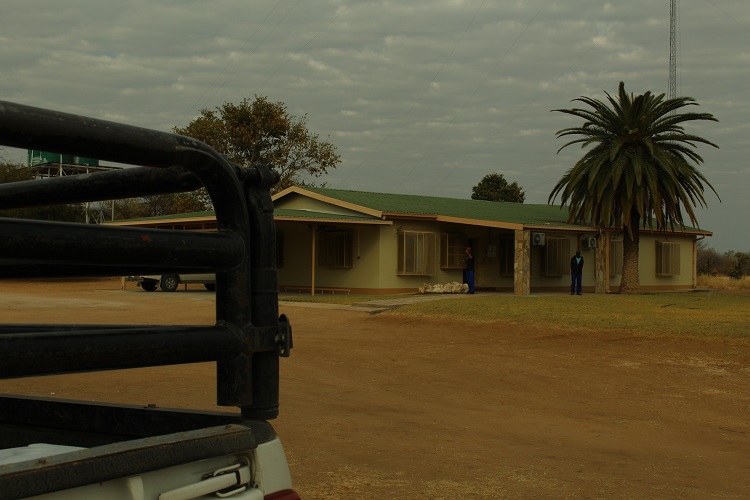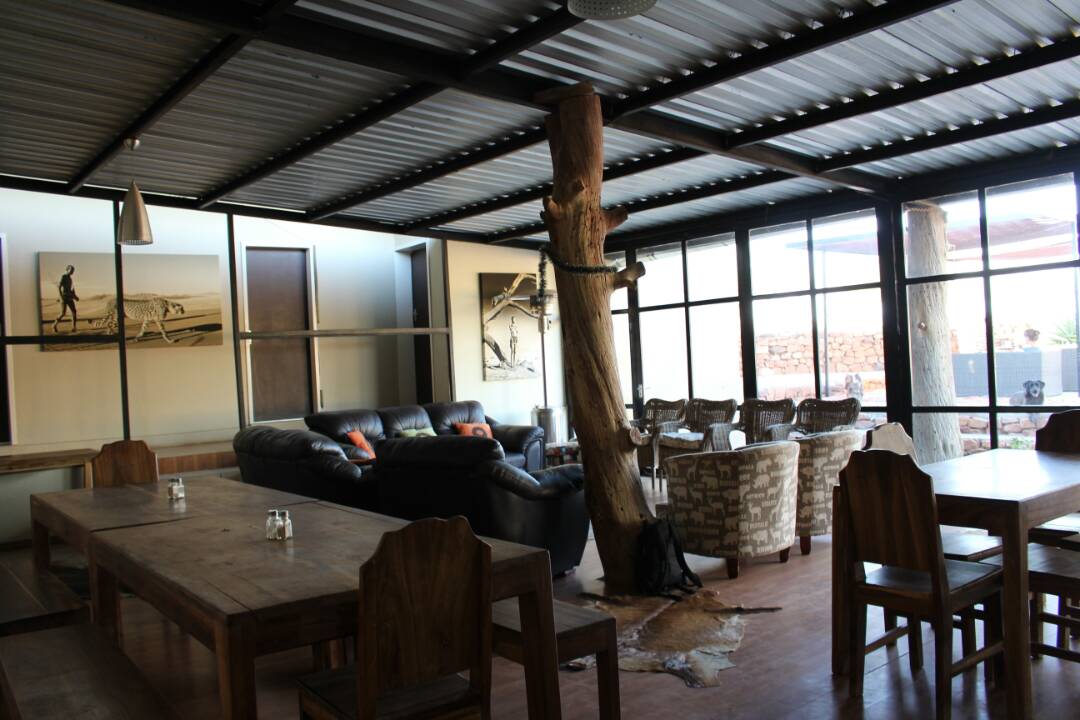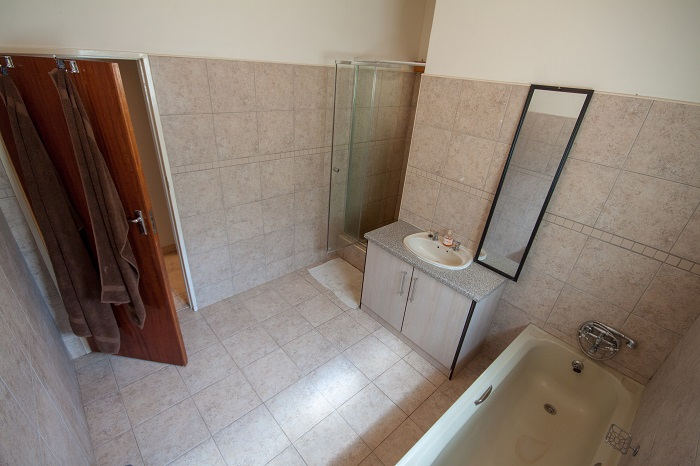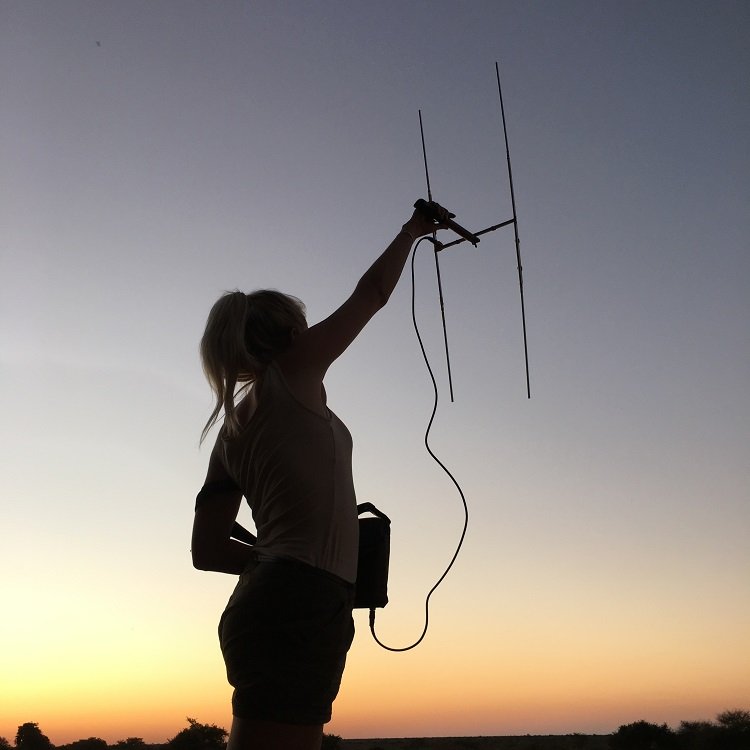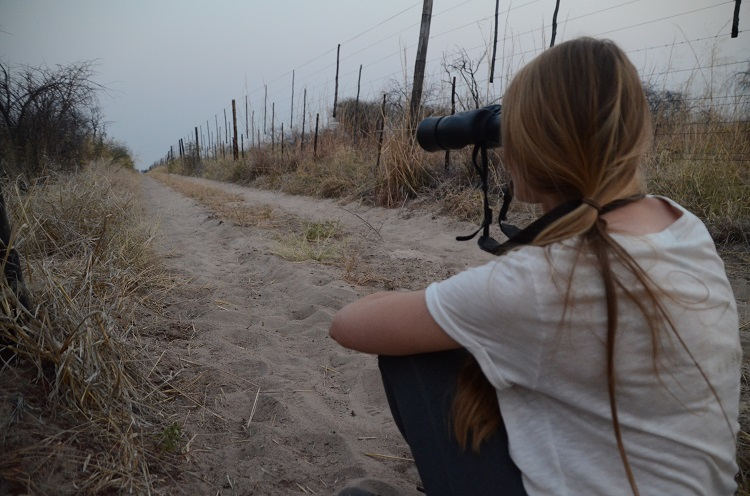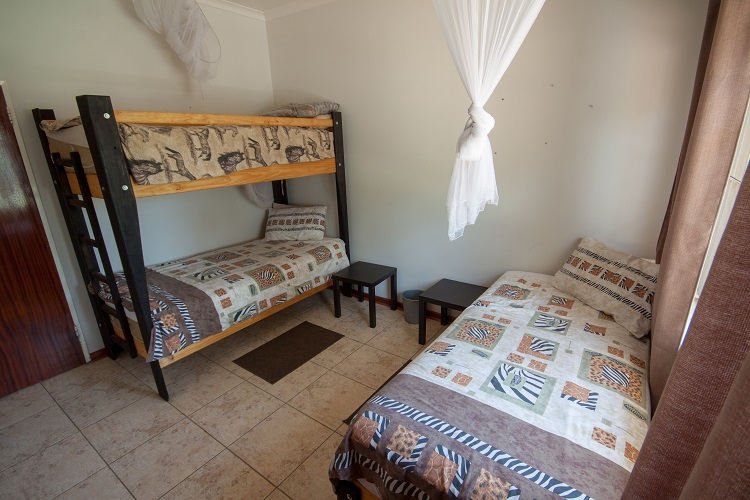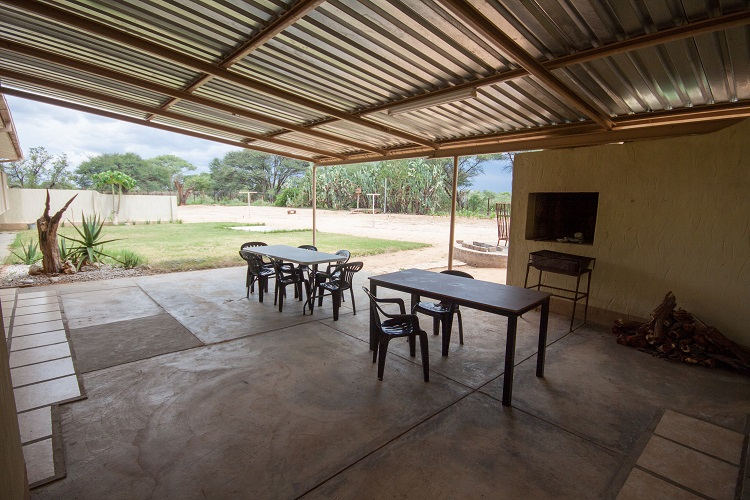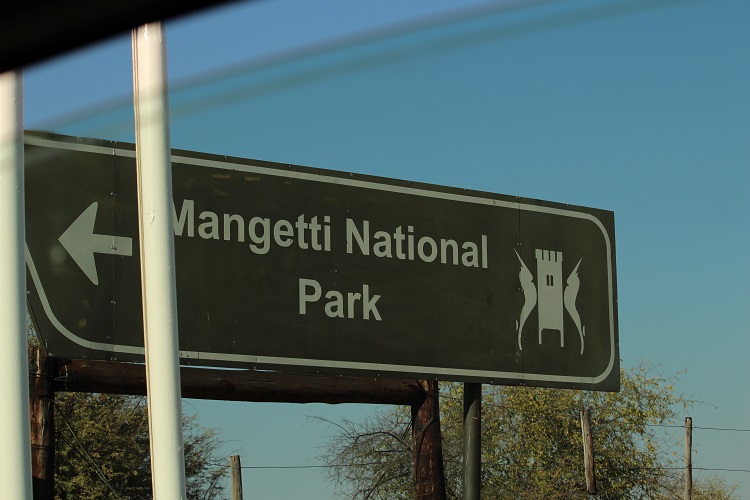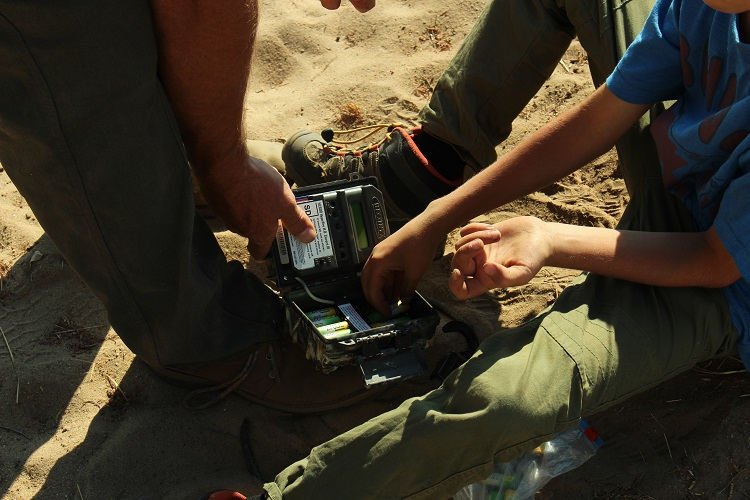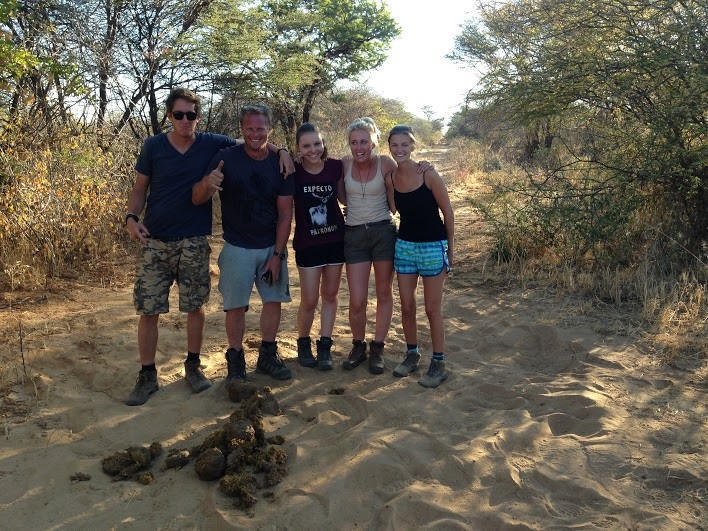NAMIBIA
ELEPHANT & AFRICAN WILD DOG RESEARCH
WILDLIFE CONSERVATION VOLUNTEER
Since 2008, the centre at Mangetti has been tirelessly fighting for the rights of those animals effected by the endless tail of human-wildlife conflict. It has never been before been as dire a situation as we are facing today, and in Africa, there is no shortage of these damaging conflict areas. With human tolerance inevitable dwindling over the years, has come with it, the dwindling of two of Africa’s most iconic species: the African Elephant, and the African Wild Dog, both nearing the end of their time on this earth if drastic measures are not taken.
Comprising of around 2,000km2, the Mangetti Complex covers a large deal of the north eastern part of Namibia, with the dense vegetation making even the largest creatures simply disappear before your very eyes. This is just one of the reasons why Mangetti makes use of a few state-of-the-art technologies available to conservation, these include: camera trapping, GPS monitoring, VHF telemetry tracking, and spoor (footprint) tracking techniques. Volunteers will be hands-on and involved with the operating and monitoring of the equipment, helping to identify individuals within a herd or pack, as well as determine distinct elements regarding how they interact with the environment, their social behaviours and hierarchy, to mention a few.
Conflict assessment and community outreach are high priority at Mangetti, helping to raise awareness and formulate clear, concise and effective plans of action to help reduce the victims of the continuous conflict between humans and the local wildlife populations.
Comprising of around 2,000km2, the Mangetti Complex covers a large deal of the north eastern part of Namibia, with the dense vegetation making even the largest creatures simply disappear before your very eyes. This is just one of the reasons why Mangetti makes use of a few state-of-the-art technologies available to conservation, these include: camera trapping, GPS monitoring, VHF telemetry tracking, and spoor (footprint) tracking techniques. Volunteers will be hands-on and involved with the operating and monitoring of the equipment, helping to identify individuals within a herd or pack, as well as determine distinct elements regarding how they interact with the environment, their social behaviours and hierarchy, to mention a few.
Conflict assessment and community outreach are high priority at Mangetti, helping to raise awareness and formulate clear, concise and effective plans of action to help reduce the victims of the continuous conflict between humans and the local wildlife populations.
- Age: min. 18
- Location: Mangetti, Namibia
- Requirements: good physical fitness, flexible
- Group size: max 8 participants
- Project duration: 1 week - 12 weeks
- Laundry: Included - weekly
- WIFI: No WIFI available, except for emergencies
- Linen/towels:Linen and towels provided. Bring your own bath-towel
Location
The project is located in Mangetti, 8 hour drive from Windhoek (North of Namibia)
Requirements
Volunteers and students from all across the globe and from any age above 18 years old are welcome. You need to speak English while working on our sites. If English is not your first language, you should be able to speak it reasonably fluently.
Training/qualifications
Hiking and trekking the mountainous terrain make up a large part of the daily activities at Mangetti, and thus you need to be fit. However, activities can be tailored to suit the fitness needs and levels of most people. Appropriate footwear is required.
Mangetti
Working tirelessly since 2008, the Centre at Mangetti has been approaching landowners and livestock farmers regarding a topic that has provided one of the greatest challenges to wildlife conservation efforts, especially regarding endangered species, throughout Africa: The Human-Wildlife Conflict. It has never in our history, before today, been more apparent to us that the massive impact that humans and human development have had on the continents native wildlife species. This is true with particular respect to both the African Elephant (Loxodonta Africana), and the African Wild Dog (Lycaon Pictus). These two survivors having had to endure decades of conflict by way of human activities. In an effort to change the course of these animals’ lives, researchers from the Mangetti centre have been working in northern Namibia, at the Mangetti Complex, with the hope of gaining a deeper understanding of both the magnitude and causes of these conflicts with the local populations. Particular attention is paid to the conflicts regarding these two species specifically.
The Mangetti Complex is divided into two main areas of operation: The Kavango Cattle Ranch is a government farm conglomerate that is situated in the Kavango region of northern Namibia. The second is the Mangetti National Park which is located nearby. In total, the study comprises of around 2,000km2 of mixed Acacia Savannah, and north-eastern Kalahari woodlands. This think and dense vegetation makes even the largest species seemingly invisible to the naked eye. Both the Namibian Nature Foundation and The AfriCat Foundation have been granted access to the property strictly for the purposes of African Wild Dog research. Volunteers will be aiding researchers in tracking and monitoring the movements and activities of the African Elephant and the African Wild Dog through the use of GPS and VHF technologies. In addition to these technologies, volunteers will be making use of motion-sensitive trail cameras, as well as the more traditional spoor (footprint) tracking techniques. This is the perfect opportunity to get that up close and personal experience with Africa’s largest land mammal, and Africa’s most endangered carnivore species.
Activities
Research, monitoring and data collection techniques and activities are all part of a full day at Mangetti, with no two days ever really being the same.
Camera Trapping
Making use of these non-invasive, motion-sensitive trail cameras are an essential part of conservation technology, providing researchers with vital information and images regarding the various species that live in the area and surrounds. These cameras are in operation 24-hours a day, 365-days a year, and never miss a beat. They have proven to be particularly useful when it comes to recording the presence and densities of populations, especially the more difficult to observe species, such as the African Wild Dog.
Camera trapping
Camera trapping also helps to identify individual animals through the unique and distinct marking in their coats. This helps to further provide more accurate information regarding population estimates, the animal’s movements and their levels of breeding success.
GPS Monitoring
Every afternoon, the information that is relayed to the satellite, via the GPS collar, is downloaded so that the movements of the herd can be tracked and mapped. This helps to identify any possible conflict situations that may arise, as well as any damage to infrastructure that may have occurred or be caused. Once this has been done, the landowners in that area and the surrounds are notified, as well as the farmers and management at the Kavango Cattle Ranch. Currently plans are underway to roll out the next phase of African Wild Dog monitoring, which will involve the capture and GPS collar-fitting to the higher-ranking members in the pack. This way, more intense monitoring is going to be possible, helping to map the range size, habitat use and potential conflict opportunities with the surrounding landowners better and with greater accuracy.
VHF Telemetry Tracking
Through the VHF transmitter beacon fitted inside a collar, regular tacking has allowed for the documentation of the movements and locations of a herd of more than 100 elephants. This crucial information has further aided the data collection efforts, affording researchers the opportunity to safely approach the herd while attempting to record both ground and aerial video footage. This vital information helps in the detailed observations of the species, herd size, structure and composition, social behaviour and their interactions with the environment.
Spoor (Footprint) Tracking
Wildlife, as you may have experienced, does not just stand around waiting to be photographed. That is why is it important that a detailed inspection of the ground that they walk on be conducted, and this involves finding and tracking their footprints (spoor). Finding tracks or spoor left behind is often the first and most important step in the early stages of tracking and monitoring the area, as well as the animals. Spoor tracking also helps to determine if further work needs to be done regarding a focal study species.
Conflict Assessment
No matter if a conflict is actual or perceived, a detailed record of each and every encounter must be made describing the incidences of the conflict. This way, a clear and decisive plan of action can be formulated, especially when it comes to the endangered wildlife species, such as the African Elephant and the African Wild Dog. It is only through this understanding that we are able to generate a coherent and detailed plan, pinning the underlying causes for the conflict and the wildlife persecution involved. The plan of action needs to produce positive and mutually beneficial results, at best, that are measurable and within reason. Efforts can greatly be improved through the filming and photography of conflict situations. The damage caused by elephants or the hunting and killing of livestock by wild dogs is best when documented to come up with more stainable solutions.
Outreach
Gaining a better understanding of the farmers and landowners attitude towards these endangered species is vital to formulating and executing a clear and productive plan of action for conservation. Talking to the local farmers, landowners and other local land management bodies is paramount to finding more practical solutions to the current conflict situations between humans and these endangered beauties.
Accommodation & meals
Situated centrally in the Kavango Cattle Ranch sites the Mangetti village where the researcher(s) and volunteers are accommodated in one of the management houses. The house has electricity and running water; the hot water is supplied through a wood-burning water boiler or ‘donkey’ as it is commonly known. Power sockets are available in the house however adaptors must be self supplied.
Meals
Meals are a simple affair in this research site. Breakfast will consist of cereal, tea/coffee and toast. Most days packed lunches (sandwich& fruit) will be prepared by volunteers and staff to be eaten in the field. Everyone takes turns to cook the main evening meal and clean up afterwards. There will usually be a traditional Namibian ‘braai’ (barbeque) one evening during the trip.
The project is located in Mangetti, 8 hour drive from Windhoek (North of Namibia)
Requirements
Volunteers and students from all across the globe and from any age above 18 years old are welcome. You need to speak English while working on our sites. If English is not your first language, you should be able to speak it reasonably fluently.
Training/qualifications
Hiking and trekking the mountainous terrain make up a large part of the daily activities at Mangetti, and thus you need to be fit. However, activities can be tailored to suit the fitness needs and levels of most people. Appropriate footwear is required.
Mangetti
Working tirelessly since 2008, the Centre at Mangetti has been approaching landowners and livestock farmers regarding a topic that has provided one of the greatest challenges to wildlife conservation efforts, especially regarding endangered species, throughout Africa: The Human-Wildlife Conflict. It has never in our history, before today, been more apparent to us that the massive impact that humans and human development have had on the continents native wildlife species. This is true with particular respect to both the African Elephant (Loxodonta Africana), and the African Wild Dog (Lycaon Pictus). These two survivors having had to endure decades of conflict by way of human activities. In an effort to change the course of these animals’ lives, researchers from the Mangetti centre have been working in northern Namibia, at the Mangetti Complex, with the hope of gaining a deeper understanding of both the magnitude and causes of these conflicts with the local populations. Particular attention is paid to the conflicts regarding these two species specifically.
The Mangetti Complex is divided into two main areas of operation: The Kavango Cattle Ranch is a government farm conglomerate that is situated in the Kavango region of northern Namibia. The second is the Mangetti National Park which is located nearby. In total, the study comprises of around 2,000km2 of mixed Acacia Savannah, and north-eastern Kalahari woodlands. This think and dense vegetation makes even the largest species seemingly invisible to the naked eye. Both the Namibian Nature Foundation and The AfriCat Foundation have been granted access to the property strictly for the purposes of African Wild Dog research. Volunteers will be aiding researchers in tracking and monitoring the movements and activities of the African Elephant and the African Wild Dog through the use of GPS and VHF technologies. In addition to these technologies, volunteers will be making use of motion-sensitive trail cameras, as well as the more traditional spoor (footprint) tracking techniques. This is the perfect opportunity to get that up close and personal experience with Africa’s largest land mammal, and Africa’s most endangered carnivore species.
Activities
Research, monitoring and data collection techniques and activities are all part of a full day at Mangetti, with no two days ever really being the same.
Camera Trapping
Making use of these non-invasive, motion-sensitive trail cameras are an essential part of conservation technology, providing researchers with vital information and images regarding the various species that live in the area and surrounds. These cameras are in operation 24-hours a day, 365-days a year, and never miss a beat. They have proven to be particularly useful when it comes to recording the presence and densities of populations, especially the more difficult to observe species, such as the African Wild Dog.
Camera trapping
Camera trapping also helps to identify individual animals through the unique and distinct marking in their coats. This helps to further provide more accurate information regarding population estimates, the animal’s movements and their levels of breeding success.
GPS Monitoring
Every afternoon, the information that is relayed to the satellite, via the GPS collar, is downloaded so that the movements of the herd can be tracked and mapped. This helps to identify any possible conflict situations that may arise, as well as any damage to infrastructure that may have occurred or be caused. Once this has been done, the landowners in that area and the surrounds are notified, as well as the farmers and management at the Kavango Cattle Ranch. Currently plans are underway to roll out the next phase of African Wild Dog monitoring, which will involve the capture and GPS collar-fitting to the higher-ranking members in the pack. This way, more intense monitoring is going to be possible, helping to map the range size, habitat use and potential conflict opportunities with the surrounding landowners better and with greater accuracy.
VHF Telemetry Tracking
Through the VHF transmitter beacon fitted inside a collar, regular tacking has allowed for the documentation of the movements and locations of a herd of more than 100 elephants. This crucial information has further aided the data collection efforts, affording researchers the opportunity to safely approach the herd while attempting to record both ground and aerial video footage. This vital information helps in the detailed observations of the species, herd size, structure and composition, social behaviour and their interactions with the environment.
Spoor (Footprint) Tracking
Wildlife, as you may have experienced, does not just stand around waiting to be photographed. That is why is it important that a detailed inspection of the ground that they walk on be conducted, and this involves finding and tracking their footprints (spoor). Finding tracks or spoor left behind is often the first and most important step in the early stages of tracking and monitoring the area, as well as the animals. Spoor tracking also helps to determine if further work needs to be done regarding a focal study species.
Conflict Assessment
No matter if a conflict is actual or perceived, a detailed record of each and every encounter must be made describing the incidences of the conflict. This way, a clear and decisive plan of action can be formulated, especially when it comes to the endangered wildlife species, such as the African Elephant and the African Wild Dog. It is only through this understanding that we are able to generate a coherent and detailed plan, pinning the underlying causes for the conflict and the wildlife persecution involved. The plan of action needs to produce positive and mutually beneficial results, at best, that are measurable and within reason. Efforts can greatly be improved through the filming and photography of conflict situations. The damage caused by elephants or the hunting and killing of livestock by wild dogs is best when documented to come up with more stainable solutions.
Outreach
Gaining a better understanding of the farmers and landowners attitude towards these endangered species is vital to formulating and executing a clear and productive plan of action for conservation. Talking to the local farmers, landowners and other local land management bodies is paramount to finding more practical solutions to the current conflict situations between humans and these endangered beauties.
Accommodation & meals
Situated centrally in the Kavango Cattle Ranch sites the Mangetti village where the researcher(s) and volunteers are accommodated in one of the management houses. The house has electricity and running water; the hot water is supplied through a wood-burning water boiler or ‘donkey’ as it is commonly known. Power sockets are available in the house however adaptors must be self supplied.
Meals
Meals are a simple affair in this research site. Breakfast will consist of cereal, tea/coffee and toast. Most days packed lunches (sandwich& fruit) will be prepared by volunteers and staff to be eaten in the field. Everyone takes turns to cook the main evening meal and clean up afterwards. There will usually be a traditional Namibian ‘braai’ (barbeque) one evening during the trip.
Dates
All volunteers will be collected from Windhoek airport and dropped of at the wildlife sanctuary. From here, the transfer to the research facility will take place. Transfers to, from and between Mangetti occur on Wednesdays. The drive to Mangetti is 8 hours (North of Namibia) You will need to arrive on Mondays and depart on Thursdays.
Rates
Rates includes
All volunteers will be collected from Windhoek airport and dropped of at the wildlife sanctuary. From here, the transfer to the research facility will take place. Transfers to, from and between Mangetti occur on Wednesdays. The drive to Mangetti is 8 hours (North of Namibia) You will need to arrive on Mondays and depart on Thursdays.
Rates
| Duration | Fees |
|---|---|
| 2 weeks & 3 days | 23500 NDS |
| 3 weeks & 3 days | 31000 NDS |
| 4 weeks & 3 days | 38500 NDS |
| 5 weeks & 3 days | 46250 NDS |
| 6 weeks & 3 days | 53000 NDS |
- Project placement
- Airport transfers on arrival and departure
- Accommodation (twin or triple room/tent, full-board, laundry service)
- 3 x Uniform t-shirts per person
- An orientation on arrival
- Electronic certificate (printed copy on request)
- Local support including 24-hour emergency number
- Research site supplement includes: transfers and additional operational costs
- Flights to Windhoek, Namibia
- Visa fees
- Travel Insurance
- Beverages & Snacks
- WIFI
Click here to sign up.
